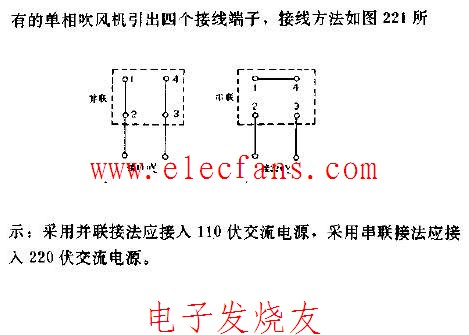1. context 介紹
很多時候,我們會遇到這樣的情況,上層與下層的goroutine需要同時取消,這樣就涉及到了goroutine間的通信。在Go中,推薦我們以通信的方式共享內存,而不是以共享內存的方式通信。
所以,就需要用到channl,但是,在上述場景中,如果需要自己去處理channl的業務邏輯,就會有很多費時費力的重復工作,因此,context出現了。
context是Go中用來進程通信的一種方式,其底層是借助channl與snyc.Mutex實現的。
2. 基本介紹
context的底層設計,我們可以概括為1個接口,4種實現與6個方法。
1 個接口
Context 規定了context的四個基本方法
4 種實現
emptyCtx 實現了一個空的context,可以用作根節點
cancelCtx 實現一個帶cancel功能的context,可以主動取消
timerCtx 實現一個通過定時器timer和截止時間deadline定時取消的context
valueCtx 實現一個可以通過 key、val 兩個字段來存數據的context
6 個方法
Background 返回一個emptyCtx作為根節點
TODO 返回一個emptyCtx作為未知節點
WithCancel 返回一個cancelCtx
WithDeadline 返回一個timerCtx
WithTimeout 返回一個timerCtx
WithValue 返回一個valueCtx
3. 源碼分析
3.1 Context 接口
type Context interface { Deadline() (deadline time.Time, ok bool) Done() <-chan struct{} Err() error Value(key interface{}) interface{}}
Deadline() :返回一個time.Time,表示當前Context應該結束的時間,ok則表示有結束時間
Done():返回一個只讀chan,如果可以從該 chan 中讀取到數據,則說明 ctx 被取消了
Err():返回 Context 被取消的原因
Value(key):返回key對應的value,是協程安全的
3.2 emptyCtx
type emptyCtx int
func (*emptyCtx) Deadline() (deadline time.Time, ok bool) { return}
func (*emptyCtx) Done() <-chan struct{} { return nil}
func (*emptyCtx) Err() error { return nil}
func (*emptyCtx) Value(key interface{}) interface{} { return nil}
emptyCtx實現了空的Context接口,其主要作用是為Background和TODO這兩個方法都會返回預先初始化好的私有變量background和todo,它們會在同一個 Go 程序中被復用:
var ( background = new(emptyCtx) todo = new(emptyCtx) )
func Background() Context { return background}func TODO() Context { return todo}
Background和TODO在實現上沒有區別,只是在使用語義上有所差異:
Background是上下文的根節點;
TODO應該僅在不確定應該使用哪種上下文時使用;
3.3 cancelCtx
cancelCtx實現了canceler接口與Context接口:
type canceler interface { cancel(removeFromParent bool, err error) Done() <-chan struct{}}
其結構體如下:
type cancelCtx struct { // 直接嵌入了一個 Context,那么可以把 cancelCtx 看做是一個 Context Context
mu sync.Mutex // protects following fields done atomic.Value // of chan struct{}, created lazily, closed by first cancel call children map[canceler]struct{} // set to nil by the first cancel call err error // set to non-nil by the first cancel call}
我們可以使用WithCancel的方法來創建一個cancelCtx:
func WithCancel(parent Context) (ctx Context, cancel CancelFunc) { if parent == nil { panic("cannot create context from nil parent") } c := newCancelCtx(parent) propagateCancel(parent, &c) return &c, func() { c.cancel(true, Canceled) }}func newCancelCtx(parent Context) cancelCtx { return cancelCtx{Context: parent}}
上面的方法,我們傳入一個父 Context(這通常是一個 background,作為根節點),返回新建的 context,并通過閉包的形式,返回了一個 cancel 方法。
newCancelCtx將傳入的上下文包裝成私有結構體context.cancelCtx。
propagateCancel則會構建父子上下文之間的關聯,形成樹結構,當父上下文被取消時,子上下文也會被取消:
func propagateCancel(parent Context, child canceler) { // 1.如果 parent ctx 是不可取消的 ctx,則直接返回 不進行關聯 done := parent.Done() if done == nil { return // parent is never canceled } // 2.接著判斷一下 父ctx 是否已經被取消 select { case <-done: // 2.1 如果 父ctx 已經被取消了,那就沒必要關聯了 // 然后這里也要順便把子ctx給取消了,因為父ctx取消了 子ctx就應該被取消 // 這里是因為還沒有關聯上,所以需要手動觸發取消 // parent is already canceled child.cancel(false, parent.Err()) return default: } // 3. 從父 ctx 中提取出 cancelCtx 并將子ctx加入到父ctx 的 children 里面 if p, ok := parentCancelCtx(parent); ok { p.mu.Lock() // double check 一下,確認父 ctx 是否被取消 if p.err != nil { // 取消了就直接把當前這個子ctx給取消了 // parent has already been canceled child.cancel(false, p.err) } else { // 否則就添加到 children 里面 if p.children == nil { p.children = make(map[canceler]struct{}) } p.children[child] = struct{}{} } p.mu.Unlock() } else { // 如果沒有找到可取消的父 context。新啟動一個協程監控父節點或子節點取消信號 atomic.AddInt32(&goroutines, +1) go func() { select { case <-parent.Done(): child.cancel(false, parent.Err()) case <-child.Done(): } }() }}
上面的方法可能遇到以下幾種情況:
當 parent.Done() == nil,也就是 parent 不會觸發取消事件時,當前函數會直接返回;
當 child 的繼承鏈包含可以取消的上下文時,會判斷 parent 是否已經觸發了取消信號;
如果已經被取消,child 會立刻被取消;
如果沒有被取消,child 會被加入 parent 的 children 列表中,等待 parent 釋放取消信號;
當父上下文是開發者自定義的類型、實現了 context.Context 接口并在 Done()方法中返回了非空的管道時;
運行一個新的 Goroutine 同時監聽 parent.Done()和 child.Done()兩個 Channel;
在 parent.Done()關閉時調用 child.cancel 取消子上下文;
propagateCancel 的作用是在 parent 和 child 之間同步取消和結束的信號,保證在 parent 被取消時,child 也會收到對應的信號,不會出現狀態不一致的情況。
func parentCancelCtx(parent Context) (*cancelCtx, bool) { done := parent.Done() // 如果 done 為 nil 說明這個ctx是不可取消的 // 如果 done == closedchan 說明這個ctx不是標準的 cancelCtx,可能是自定義的 if done == closedchan || done == nil { return nil, false } // 然后調用 value 方法從ctx中提取出 cancelCtx p, ok := parent.Value(&cancelCtxKey).(*cancelCtx) if !ok { return nil, false } // 最后再判斷一下cancelCtx 里存的 done 和 父ctx里的done是否一致 // 如果不一致說明parent不是一個 cancelCtx pdone, _ := p.done.Load().(chan struct{}) if pdone != done { return nil, false } return p, true}
ancelCtx 的 done 方法會返回一個 chan struct{}:
func (c *cancelCtx) Done() <-chan struct{} { d := c.done.Load() if d != nil { return d.(chan struct{}) } c.mu.Lock() defer c.mu.Unlock() d = c.done.Load() if d == nil { d = make(chan struct{}) c.done.Store(d) } return d.(chan struct{})}var closedchan = make(chan struct{})
parentCancelCtx 其實就是判斷 parent context 里面有沒有一個 cancelCtx,有就返回,讓子context可以“掛靠”到parent context 上,如果不是就返回false,不進行掛靠,自己新開一個 goroutine 來監聽。
3.4 timerCtx
timerCtx 內部不僅通過嵌入 cancelCtx 的方式承了相關的變量和方法,還通過持有的定時器 timer 和截止時間 deadline 實現了定時取消的功能:
type timerCtx struct { cancelCtx timer *time.Timer // Under cancelCtx.mu.
deadline time.Time}
func (c *timerCtx) Deadline() (deadline time.Time, ok bool) { return c.deadline, true}
func (c *timerCtx) cancel(removeFromParent bool, err error) { c.cancelCtx.cancel(false, err) if removeFromParent { removeChild(c.cancelCtx.Context, c) } c.mu.Lock() if c.timer != nil { c.timer.Stop() c.timer = nil } c.mu.Unlock()}
3.5 valueCtx
valueCtx 是多了 key、val 兩個字段來存數據:
type valueCtx struct { Context key, val interface{}}
取值查找的過程,實際上是一個遞歸查找的過程:
func (c *valueCtx) Value(key interface{}) interface{} { if c.key == key { return c.val } return c.Context.Value(key)}
如果 key 和當前 ctx 中存的 value 一致就直接返回,沒有就去 parent 中找。最終找到根節點(一般是 emptyCtx),直接返回一個 nil。所以用 Value 方法的時候要判斷結果是否為 nil,類似于一個鏈表,效率是很低的,不建議用來傳參數。
4. 使用建議
在官方博客里,對于使用 context 提出了幾點建議:
不要將 Context 塞到結構體里。直接將 Context 類型作為函數的第一參數,而且一般都命名為 ctx。
不要向函數傳入一個 nil 的 context,如果你實在不知道傳什么,標準庫給你準備好了一個 context:todo。
不要把本應該作為函數參數的類型塞到 context 中,context 存儲的應該是一些共同的數據。例如:登陸的 session、cookie 等。
同一個 context 可能會被傳遞到多個 goroutine,別擔心,context 是并發安全的。
-
接口
+關注
關注
33文章
8667瀏覽量
151526 -
數據
+關注
關注
8文章
7102瀏覽量
89283 -
通信
+關注
關注
18文章
6046瀏覽量
136216
原文標題:不要將 Context 塞到結構體里。
文章出處:【微信號:magedu-Linux,微信公眾號:馬哥Linux運維】歡迎添加關注!文章轉載請注明出處。
發布評論請先 登錄
相關推薦
檢測熱敏電阻故障的四個方法
清理手機內存的四個方法
示波器經常說“四個部分”是哪四個部分?





 context的四個基本方法
context的四個基本方法
















評論